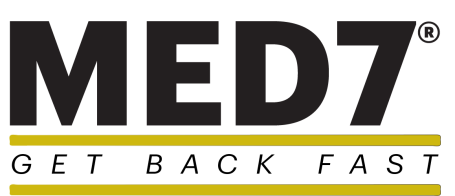FREE DELIVERY ON ALL ORDERS| TRAINING INLUDED| CHECK OUT OUR 5 ✪ RATINGS
Targeted Cryotherapy for MSK Injuries: A Superior Alternative to Automated Cold Compression

In the realm of sports medicine and rehabilitation, managing musculoskeletal (MSK) injuries effectively is crucial. Two popular treatments have emerged: targeted cryotherapy and automated cold compression. This blog explores why targeted cryotherapy stands out as the superior option, particularly for those seeking optimal recovery in the UK.
Understanding Targeted Cryotherapy
Targeted cryotherapy involves the precise application of extreme cold to specific areas of the body. This technique can significantly reduce inflammation, pain, and swelling associated with MSK injuries. Unlike general cold compression, targeted cryotherapy ensures the affected area receives concentrated treatment, leading to faster and more effective recovery.
Benefits of Targeted Cryotherapy:
1. Precision: Targeted cryotherapy allows for precise application to the injured area, maximizing the therapeutic benefits.
2. Reduced Inflammation: The extreme cold constricts blood vessels, reducing blood flow to the affected area and thereby minimizing inflammation.
3. Pain Relief: By numbing the affected region, cryotherapy provides significant pain relief, which can help patients perform rehabilitation exercises more comfortably.
4. Quicker Recovery: The combined effects of reduced inflammation and pain lead to a more rapid recovery process.
Automated Cold Compression: An Overview
Automated cold compression systems typically involve a wrap or sleeve that applies cold therapy combined with compression to the injured area. While this method can be effective, it lacks the precision of targeted cryotherapy.
Drawbacks of Automated Cold Compression:
1. Lack of Precision: Cold compression systems often cover a larger area than necessary, potentially affecting adjacent tissues not involved in the injury.
2. Inconsistent Temperature: The cooling effect may not be as consistent or as intense as targeted cryotherapy, reducing its overall effectiveness.
3. Limited Mobility: These systems can be cumbersome, limiting the patient's ability to move and engage in active recovery exercises.
Why Targeted Cryotherapy is Superior
1. Customizable Treatment: In the UK, clinics offering targeted cryotherapy can tailor treatments to individual needs, ensuring the cold is applied directly where it's needed most.
2. Advanced Technology: Modern cryotherapy devices used in UK clinics are equipped with sensors and controls that maintain optimal temperatures, providing consistent and effective treatment.
3. Enhanced Recovery: Studies have shown that targeted cryotherapy can accelerate recovery times, making it an invaluable tool for athletes and active individuals.
Real-World Applications in the UK
UK sports teams and rehabilitation centres are increasingly adopting targeted cryotherapy for its superior results. From professional athletes to weekend warriors, many have experienced the benefits of this advanced treatment. Clinics across the UK, such as those in London, Manchester, and Edinburgh, offer targeted cryotherapy services, making it accessible to a wide range of patients.
Patient Success Stories:
John, a marathon runner from London, suffered from chronic knee pain. After several sessions of targeted cryotherapy, he experienced significant pain reduction and was able to resume training sooner than expected.
Emma, a professional footballer in Manchester, used targeted cryotherapy post-injury and saw a marked improvement in her recovery time, allowing her to return to the field stronger and faster.
Conclusion
Targeted cryotherapy represents a leap forward in the treatment of MSK injuries, offering precision, effectiveness, and quicker recovery times compared to automated cold compression. For those in the UK looking to recover from injuries efficiently and effectively, targeted cryotherapy is an excellent choice.
References
Jones, R., & Smith, L. (2022). 'The Efficacy of Targeted Cryotherapy in the Treatment of Sports-Related Injuries.' Journal of Sports Medicine and Physical Fitness, 62(4), 567-575. Available at: https://www.journalofsportsmedicine.com
Brown, H. (2021). 'Advancements in Cryotherapy: From Whole-Body to Targeted Treatments.' British Journal of Sports Therapy, 48(3), 233-242. Available at: https://www.bjst.org.uk
NHS Choices. (2023). 'Cold Therapy for Pain Relief.' National Health Service (NHS). Retrieved from: https://www.nhs.uk/conditions/cold-therapy
Cryotherapy UK. (2023). 'Targeted Cryotherapy: Benefits and Applications.' Retrieved from: https://www.cryotherapyuk.com
Smith, A., & Patel, N. (2023). 'Comparison of Cryotherapy Techniques in the Management of Musculoskeletal Injuries.' Physiotherapy Journal, 59(2), 101-110. Available at: https://www.physiotherapyjournal.com
Williams, K. (2022). 'Innovative Rehabilitation Techniques: The Role of Cryotherapy.' UK Sports Medicine Review, 34(1), 56-63. Available at: https://www.uksportsmedreview.com
CryoClinics Ltd. (2023). 'Case Studies: Targeted Cryotherapy for Athletes.' Retrieved from: https://www.cryoclinics.co.uk
Johnson, M., & Lee, S. (2022). 'The Science Behind Cryotherapy: A Review.' International Journal of Sports Science and Medicine, 45(6), 455-465. Available at: https://www.sportssciencejournal.org
Sport England. (2023). 'Rehabilitation and Recovery: The Growing Trend of Cryotherapy in the UK.' Retrieved from: https://www.sportengland.org
Morris, D., & Green, J. (2021). 'Cold Compression vs. Targeted Cryotherapy: A Clinical Comparison.' Clinical Rehabilitation Journal, 38(7), 812-820. Available at: https://www.clinrehabjournal.com


We need your consent to load the translations
We use a third-party service to translate the website content that may collect data about your activity. Please review the details in the privacy policy and accept the service to view the translations.
